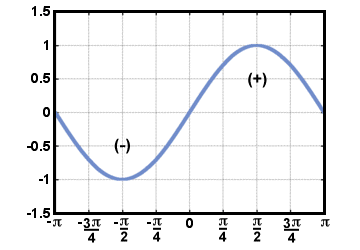Please wait while we process your payment
If you don't see it, please check your spam folder. Sometimes it can end up there.
If you don't see it, please check your spam folder. Sometimes it can end up there.
Please wait while we process your payment
Get instant, ad-free access to our grade-boosting study tools with a 7-day free trial!
Learn more



This site is protected by reCAPTCHA and the Google Privacy Policy and Terms of Service apply.
Create Account
Select Plan
Payment Info
Start 7-Day Free Trial!

Annual
2-49 accounts
$22.49/year + tax
50-99 accounts
$20.99/year + tax
Select Quantity
Price per seat
$29.99 $--.--
Subtotal
$-.--
Want 100 or more? Request a customized plan
You could save over 50%
by choosing an Annual Plan!

SAVE OVER 50%
compared to the monthly price!
| Focused-studying | ||
| PLUS Study Tools | ||
| AP® Test Prep PLUS | ||
| My PLUS Activity | ||
$22.49/month + tax
Save 25%
on 2-49 accounts
$20.99/month + tax
Save 30%
on 50-99 accounts
| Focused-studying | ||
| PLUS Study Tools | ||
| AP® Test Prep PLUS | ||
| My PLUS Activity | ||
No Fear provides access to Shakespeare for students who normally couldn’t (or wouldn’t) read his plays. It’s also a very useful tool when trying to explain Shakespeare’s wordplay!
Erika M.
I tutor high school students in a variety of subjects. Having access to the literature translations helps me to stay informed about the various assignments. Your summaries and translations are invaluable.
Kathy B.
Teaching Shakespeare to today's generation can be challenging. No Fear helps a ton with understanding the crux of the text.
Kay H.
No Fear provides access to Shakespeare for students who normally couldn’t (or wouldn’t) read his plays. It’s also a very useful tool when trying to explain Shakespeare’s wordplay!
Erika M.
I tutor high school students in a variety of subjects. Having access to the literature translations helps me to stay informed about the various assignments. Your summaries and translations are invaluable.
Kathy B.
Teaching Shakespeare to today's generation can be challenging. No Fear helps a ton with understanding the crux of the text.
Kay H.
Create Account
Select Plan
Payment Info
Start 7-Day Free Trial!
You will only be charged after the completion of the 7-day free trial.
If you cancel your account before the free trial is over, you will not be charged.
You will only be charged after the completion of the 7-day free trial. If you cancel your account before the free trial is over, you will not be charged.
Order Summary
Annual
7-day Free Trial
SparkNotes PLUS
$29.99 / year
Annual
Quantity
51
PLUS Group Discount
$29.99 $29.99 / seat
Tax
$0.00
SPARK25
-$1.25
25% Off
Total billed on Nov 7, 2024 after 7-day free trail
$29.99
Total billed
$0.00
Due Today
$0.00
Promo code
This is not a valid promo code
Card Details
By placing your order you agree to our terms of service and privacy policy.
By saving your payment information you allow SparkNotes to charge you for future payments in accordance with their terms.
Powered by stripe
Legal
Google pay.......



Please wait while we process your payment

Sorry, you must enter a valid email address
By entering an email, you agree to our privacy policy.
Please wait while we process your payment

Sorry, you must enter a valid email address
By entering an email, you agree to our privacy policy.
Please wait while we process your payment

Your PLUS subscription has expired
Please wait while we process your payment
Please wait while we process your payment

The Definite Integral
The definite integral is a convenient notation used the represent the left-hand and
right-hand approximations discussed in the previous section.
 f (x)dx means the area of the region bounded by f, the y-axis and
the lines x = a and x = b. Writing
f (x)dx means the area of the region bounded by f, the y-axis and
the lines x = a and x = b. Writing  f (x)dx is equivalent to writing
f (x)dx is equivalent to writing
  f(xk)Δx f(xk)Δx |
on the interval [a, b], but it is a much more compact way of doing so. Note also the similarity between the two expressions. This should serve as a clear reminder that the definite integral is just the limit of right-hand and left-hand approximations.
Unlike the indefinite integral, which represents a function, the definite integral represents a number, and is simply the signed area under the curve of f. The area is considered "signed" because according to the method of calculating the areas by subdivisions, the regions located below the x-axis will be counted as negative, and the regions above will be counted as positive. Negative regions cancel out positive regions, and the definite integral represents the total balance between the two over the given interval. For example, find
 sin(x)dx sin(x)dx |
Based on the picture of the region being considered, it should be clear that the answer is zero. Here, the negative region is exactly the same size as the positive region:

The definite integral has certain properties that should be intuitive, given its definition as the signed area under the curve:
 cf (x)dx = c
cf (x)dx = c f (x)dx
f (x)dx

 f (x)+g(x)
f (x)+g(x) dx =
dx =  f (x)dx +
f (x)dx +  g(x)dx
g(x)dx
 f (x)dx = f (x)dx =  f (x)dx + f (x)dx +  f (x)dx f (x)dx |
 f (x)dx=F(b) - F(a) f (x)dx=F(b) - F(a) |
 x2dx = x2dx =  (1)3 - (1)3 -  (0)3 = (0)3 =  |
 x2dx = x2dx =   x3 x3 = =  |
 v(t)dt=s(b) - s(a) v(t)dt=s(b) - s(a) |
Please wait while we process your payment





